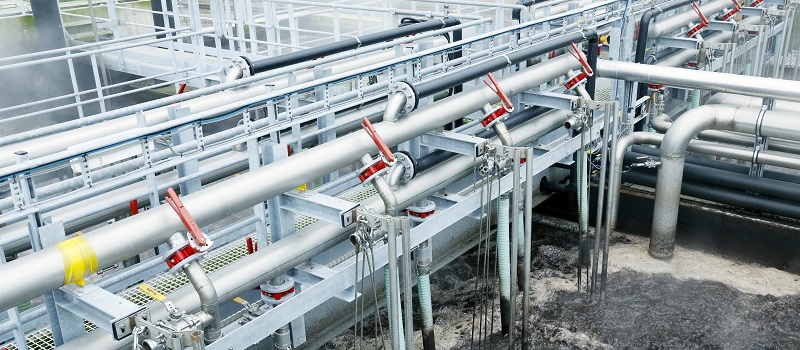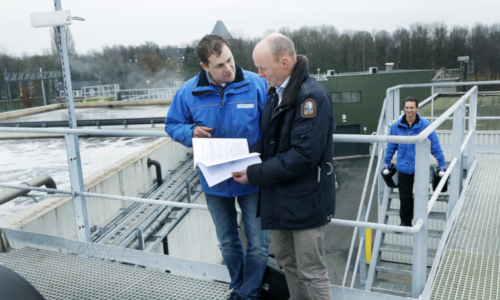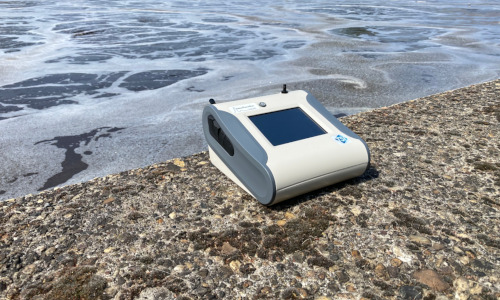In 2017 and 2018, two Dutch industrial waste water treatment plants were identified as a source for Legionella patients in the area. Legionella can grow mainly in warm aerobic waste water and can be a risk when it is reused or aerosolized. Hydroscope has carried out more than 30 risk assessments, 3.000 water samples end 1.000 air samples. We summarised our knowledge for you.

Legionella outbreaks linked to waste water
In relation to cooling towers and drinking water installations, few Legionella cases with wastewater have been described:
- In 1999, five employees in Denmark got infected with Legionella while working on a wastewater treatment plant at a food company. The employees worked in a confined space and wore the wrong respiratory protection.
- In 2003 and 2004, 86 people in France fell ill with Legionella. Legionella was found in the wastewater treatment plant and cooling tower of a petrochemical company.
- In 2004, an employee in Sweden fell ill after working at a wastewater treatment plant at a paper mill.
- In 2005 and 2008, 64 people in Norway fell ill with Legionella. Legionella bacteria are found in a wastewater treatment plant at a wood processing company.
- In 2005, an employee in Finland falls ill and works 200 meters away from a wastewater treatment plant. Legionella is found in both the wastewater treatment and the nearby cooling tower.
- In 2006, an employee in Finland falls ill after working on an aeration basin.
- In 2013, 78 people fall ill in Germany. Legionella is found in the wastewater treatment plant of a beer brewery. Most likely, legionella spread through a nearby cooling tower.
- In 2017, two employees fall ill in Finland after cleaning an air scrubber of a wastewater treatment plant.
- In 2016 and 2017, 15 people in Boxtel (The netherlands) fall ill with Legionella. After source detection, Legionella is found at a wastewater treatment plant of a meat processing company. The sequence type ST1646 corresponds to five patients. The patients live up to two kilometers from the wastewater purification.
- At the beginning of 2018, Legionella was found at a wastewater treatment plant in Son (The netherlands). Since 2013, there have been more reports of Legionella than expected in that area. In the period from 2013 to March 2018, there were 56 patients, compared to only 11 patients in the previous 5 years (2008-2012). This increase is greater than the national increase. In the period 2013-2017, an identical ST type was detected in 7 out of 17 patients (ST1646). Also in 2018, there was a patient seen where the typing indicated an ST1646.
- In 2018, the water boards recommend not to spray water from ‘the Roer’, after high concentrations of Legionella were found in ‘the Roer’. A paper factory in Düren (Germany) has discharged high concentrations of Legionella into the sewer. The water ended up in the Roer via the sewage treatment plant.
- In 2020, a person in Amerika got infected with Legionella Longbeachae after using dry waste from a water treatment plant to fertilize his garden.
Growing factors
Known Legionella outbreaks related to waste water have one thing in common, the water temperature is above 25°C. At some treatment plants the influent already contains high concentrations of Legionella. But we discovered that Legionella can also grow to high concentrations in aerated treatment steps. We suspect that animal related waste water is more sensitive for Legionella growth. Looking at our sample results the usage of an anaerobic treatment step causes higher concentrations of Legionella in the following aerated water treatment.

Transmission of Legionella from waste water

Legionella is risk full when water is aerosolised. Legionella can be distributed to the environment on different ways:
- Effluent: The effluent can contain high levels of Legionella concentration. When the waste water is reused it can be a danger when it is aerosolized. For example if it is used for cooling towers or irrigation.
- Sludge: Also the sludge can contain Legionella. Most of the sludge is burned of pasteurized. In some cases the sludge is used for starting up new water plants. This can cause cross contamination. Sometimes sludge is dewatered, this can be risk full for employees.
- Aerosolised: Most of the water treatments are aerated for oxygen supply. This can cause spreading of aerosols.
More information about Legionella in waste water
Hydroscope deployed more than 50 risk assessments on waste water treatment plants. Our knowledge is summarised in this document ‘Legionella in waste water‘.